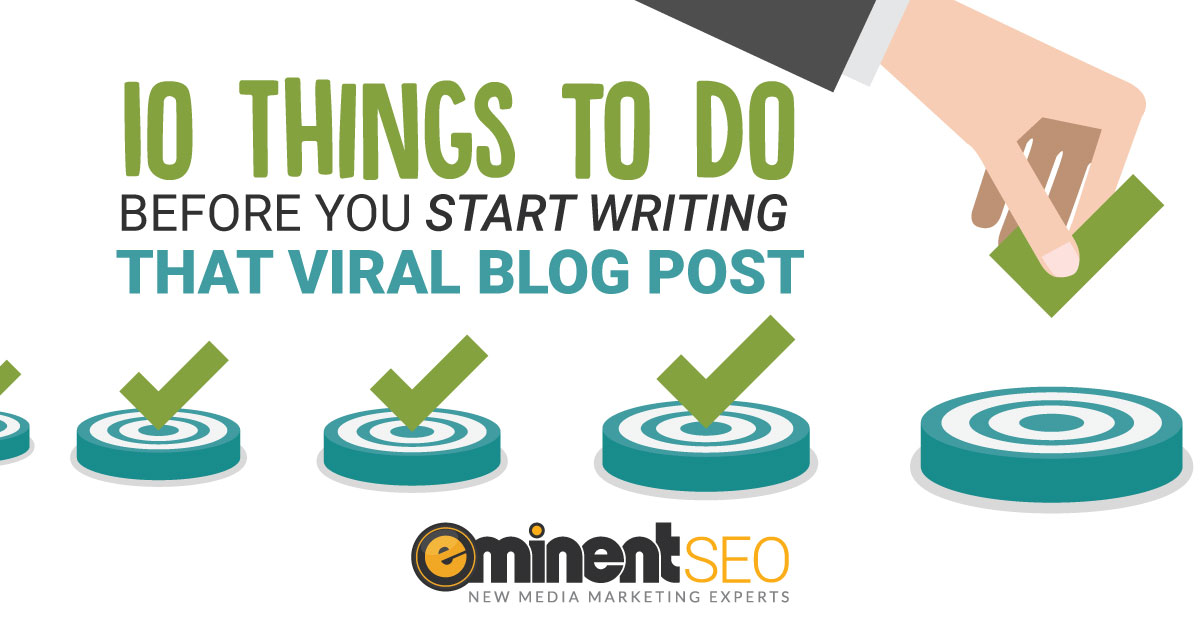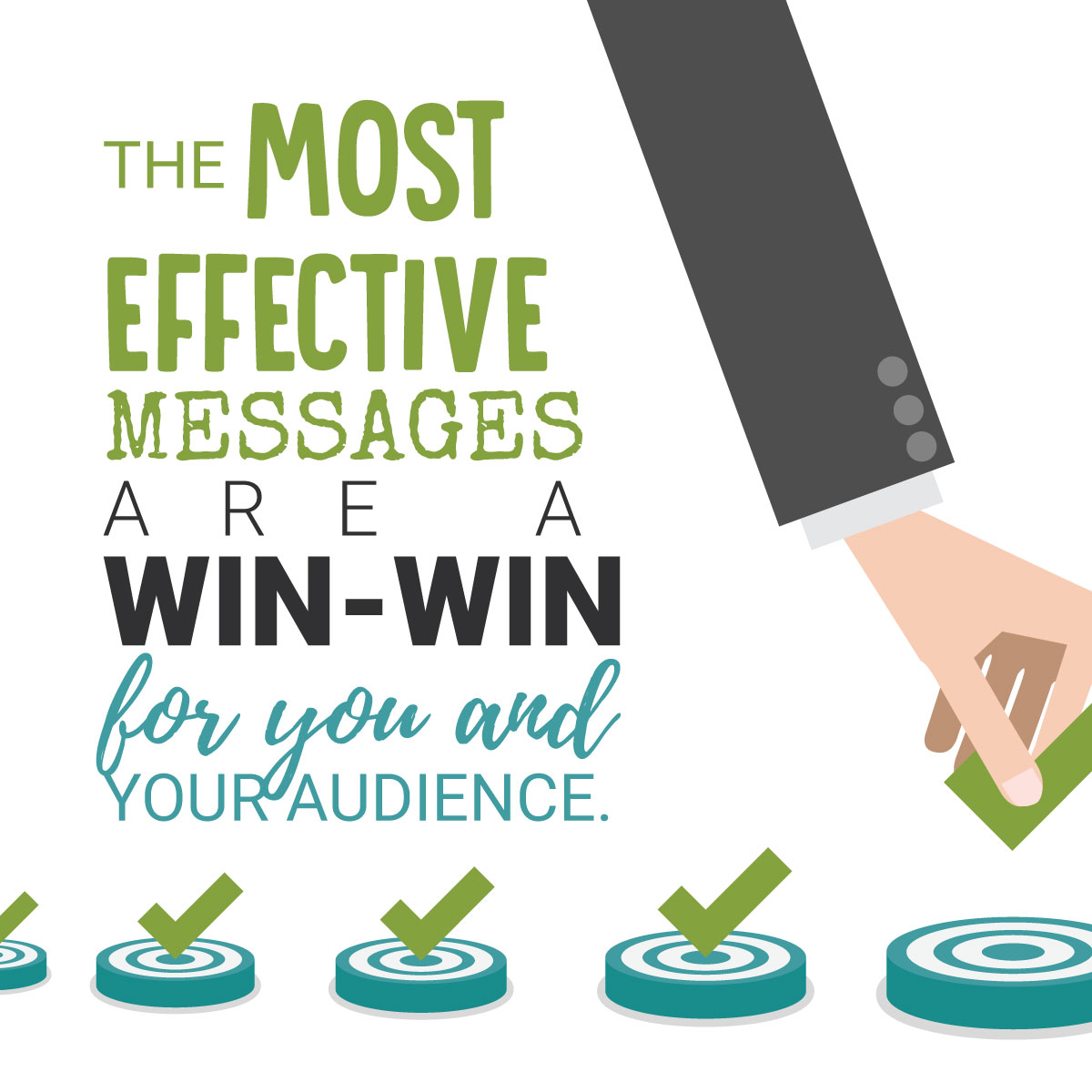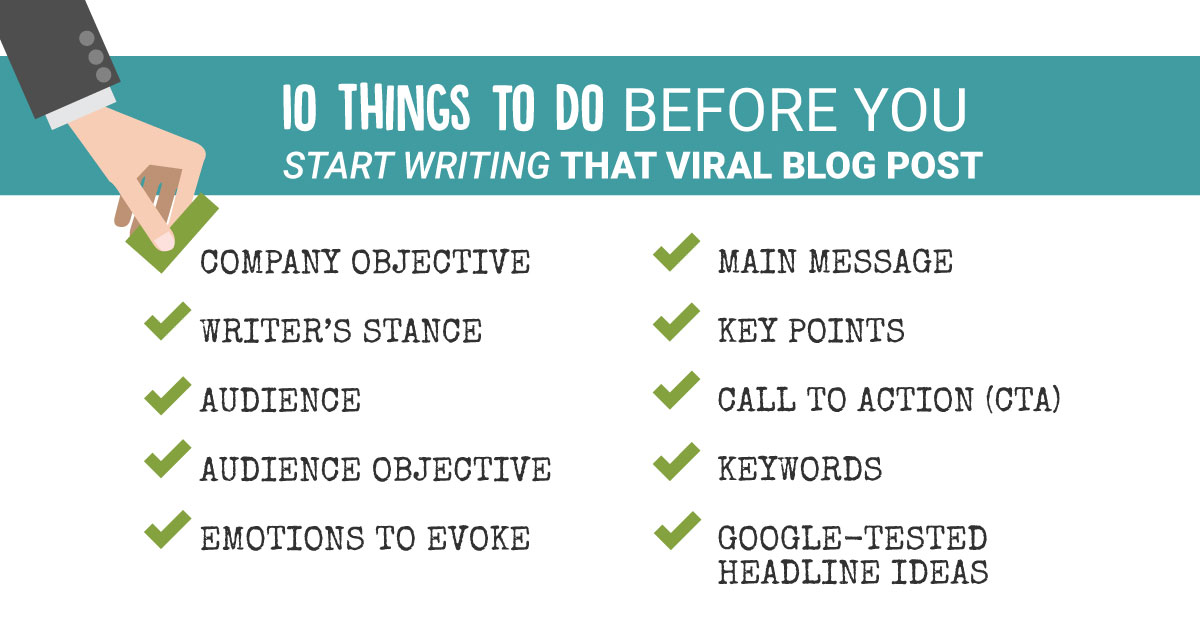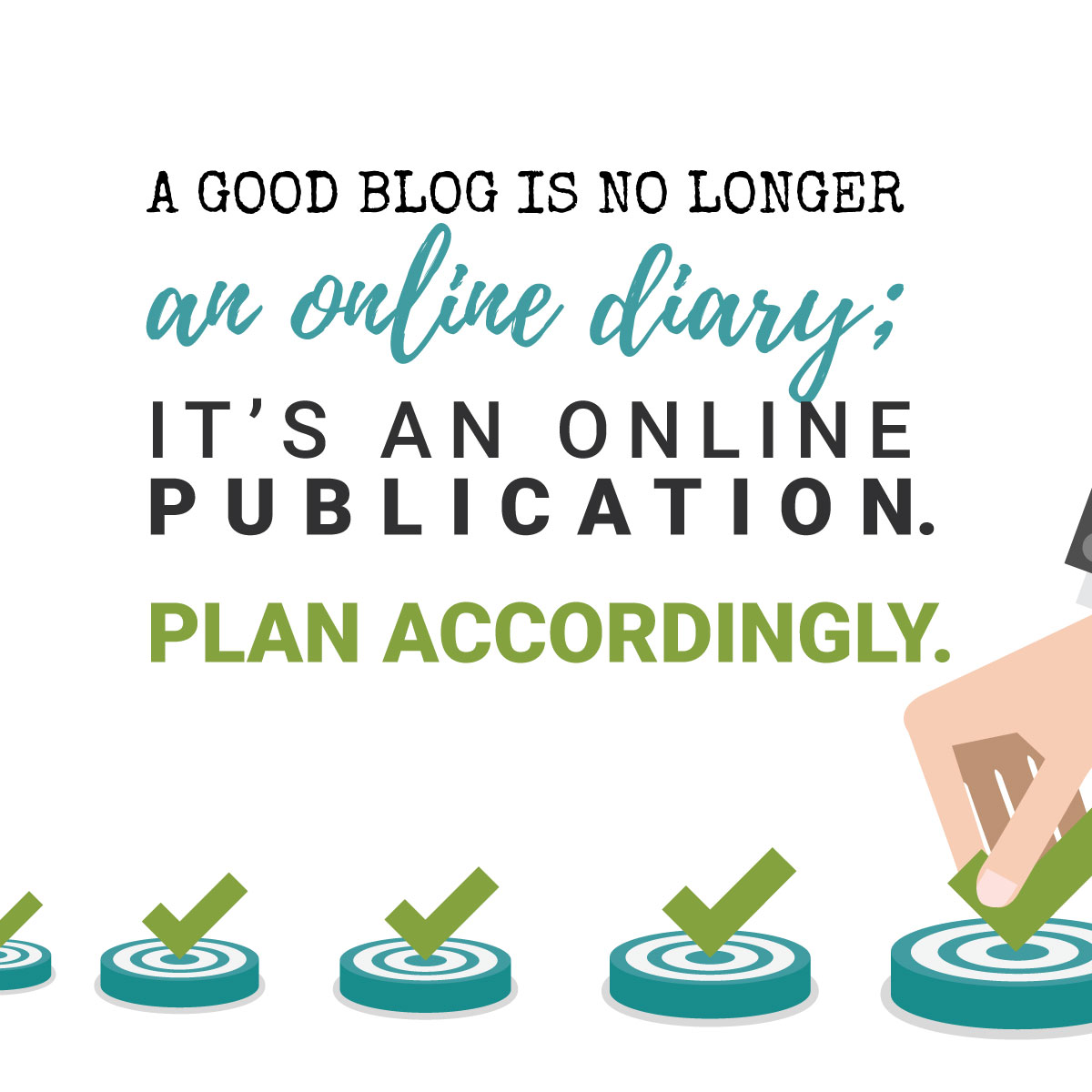
At least I hear that’s what happened. But I’ve never been a blogger in such simple times. When modern-day bloggers write a blog post – or any content for that matter – it’s competing with an ever-growing mountain of online information and faces the very real possibility of never being seen by another single person.
Content marketers these days don’t have the luxury of simply writing something and hoping that it will get seen. If you want your content to be read and shared online, you need a powerful plan to make it stand out from the crowd.
Do I Really Need to Pre-Plan My Blog Posts?

Either way, you will need to modify the content so that it not only communicates what you want to say, but also hits home for your readers.
Investing time in a plan will help you achieve a much better ROI on the time you spend actually writing your content.
I’m going to give you an inside peek into the process I’ve created, improved and used again and again for the last nine years to create outstanding content. You’re welcome.
Pre-Writing Checklist

1. Company Objective (i.e., What’s in It for Me?)
This one is super easy because this is where everyone writes from by default when planning a piece of content. This is simply what you the writer (or the company you represent) what to accomplish with your content.
It can include things like:
- Sharing your message on a certain topic
- Educating clients and potential customers
- Ranking for a search term
- Creating a gated offer to get people to sign up for your email list
The Company Objective is whatever reason(s) you have for writing the content. It doesn’t matter if your goals are selfish or altruistic; in fact, they may be both. The important thing in this stage is to be honest and clear with yourself about why you’re investing resources in creating this content.
Don’t worry: Your audience won’t see this information. It’s for your eyes only.
2. Writer’s Stance
This is a step I added recently, and is really an extension of step 1. This is where you give your opinion, your position on the topic. Whereas the Company Objective is practical – what you want to accomplish – the Writer’s Stance is about what you want to say. It stems from your deeply held beliefs about the topic.
It’s OK – in fact, it’s good – for this to be emotional and opinionated. Remember that your audience has many other sources for their information. What can you bring to this topic that no one else can? What’s your unique take on the subject? What do you want to say that no one else is talking about – that needs to be addressed? Why does what you have to say really matter?
3. Audience
Next, you want to clearly identify who you’re writing this content for. The more specific you are, the better, because it will allow you to create a more targeted and impactful message.
If you have buyer personas that you use in your marketing, identify which one this is for primarily. It’s OK to have content that is for multiple audiences, if need be, but designate which one is the primary audience and which is the secondary audience.
It is also helpful to identify which part of the buyer stage this content is targeted to. For example, are you writing for an existing client, or a prospect? If they’re a prospect, are they in the early information-gathering stage, or in the almost-ready-to-buy stage?
4. Audience Objective (i.e., What’s in It for Them)
This is a critical step, and it’s one that most people skip without realizing it, because they’re so focused on their own objectives for creating the content.
Quite simply, you’re answering the questions:
Why will my audience care about this? What’s in it for them? How will they benefit from reading this?
Put yourself in the mindset of the person you identified in step 3, and be really honest with yourself as you ask these questions. Would I read this if I were them? Would I care? Would I share it?
If the honest answer is “no,” don’t panic. This is actually a good thing, because it means you just dodged a bullet. If you had gone ahead and written the article only because of the reasons you wanted to write it, then while you might be quite satisfied with it, your audience would probably ignore it. That’s no bueno.
But when you recognize that you’re missing the WIIFT (what’s in it for them) element, this gives you the opportunity to figure out what would make the piece relevant to your audience, and then plan your writing accordingly.
I cannot over-emphasize the importance of this stage enough. If you do no other planning before you write, do these first four steps. Do it every single time you write anything where you need to influence others to pay attention and take action.
I realize you’ve probably heard about the importance of the WIIFT principle before, but if you’re not using it on a regular basis, then you’re likely missing the mark in a lot of your communications. All people – myself included – communicate by default from our own point of view.
It takes conscious effort to shift your thinking to see the situation from another perspective. And that shift can make all the difference.
5. Emotions to Evoke
In this step, you’re asking yourself how you want the reader to feel when they read your article.
Whereas the Audience Objective is often very practical – they want to learn something – there should also be an emotional component.
In fact, when you do this step, you may end up going back and refining your Audience Objective, because the biggest thing your article may be able to do for your audience is help them feel better, or feel more certain about what they need to do next. Knowledge is powerful, but emotion is often the extra kick people need to motivate them to take action.
6. Main Message
Now that you know what’s in it for you, what’s in it for your audience, how you feel about the topic and how you want to make your reader feel, it’s time to identify your Main Message.
This is the main idea, the thesis statement, the single most important point of your communication. Like The Highlander, there can be only one. (If you’re not old enough, or geeky enough, to know that reference, don’t worry about it, just keep reading.)
Yes, you will have other ideas in your article, but those go in the next step. Feel free to brainstorm both your Main Message and Key Points at the same time.
7. Key Points
Once you’ve identified the Main Message, you can flesh out the key supporting details – just like you learned in writing class in school.
In practice, however, I find that I often start outlining and then get on a roll and end up writing paragraphs of content. If this happens to you, just go with it. Get out whatever comes to you.
Once the ideas are out on paper (metaphorically speaking) you can easily copy and paste to separate the outline points and put any content you wrote into your actual post draft.
The point of outlining is to organize the flow of your ideas, not to stifle your creativity. So keep this process as tight or loose as feels comfortable for you.
8. Call to Action (CTA)
This is another one of those steps that people commonly leave off, because they get so focused on writing the content that they forget to ask the reader to do something at the end.
There are many types of CTAs, including these popular choices:
- Share your opinion in the comments.
- Sign up for a free guide to learn more.
- Take the first step to applying this advice now.
- Learn about our services.
- Read one of our other posts on a similar topic.
- Call us to find out how we can help you.
Remember in step 3 how we identified which stage in the buyer’s journey your audience is in? This is one place where it becomes very relevant.
If someone is just getting started educating themselves on the topic, you probably want to send them to additional information, like another blog post or an eBook. But if they’re near the ready-to-buy stage, then asking them to visit your services page or call for a quote may be more appropriate.
9. Keywords
While your content should be written first and foremost for real human beings, it’s also a good idea to consider which keywords you would like your article to rank for. In fact, if online traffic is an important part of your business, then this isn’t optional: It’s an essential part of planning your blog post.
One common mistake that many people make when they’re focused on SEO is that they write for the keyword and not the reader. By doing this entire pre-planning checklist, you can be sure to do both. An article that speaks deeply to audiences will do well on social media, and if it’s also SEO optimized, it will do well in organic search – the best of both worlds.
Looking again at your audience and audience objective, think about what that person would search for if they were looking up information on your topic. Make a list of a few different search variations. Try to identify specific terms, because it will most likely be easier to rank well for long-tail keywords than general, umbrella terms.
10. Google-Tested Headline Ideas
Once you know your main message – which is optimized for your audience’s needs and emotions – and the keywords they’ll use to search for information, you can start brainstorming headline ideas.
Writing great headlines is an art and science in itself, and beyond the scope of this article. However, there is one tip that I picked up recently from a co-worker (thank you Zach) that is so simple and obvious that it’s easily overlooked. I couldn’t believe I hadn’t been doing this all along.
Copy your favorite headline idea, and paste it into a Google search and see what comes up. Read the top-ranking posts and evaluate them. How are the messages the same? How are they different?
And perhaps most importantly, what are they leaving out? Where is the gap in information that’s currently being served up by Google that you can fill with your article?
Your goal with this exercise is to find ways to set your content apart and not be just a copy of something that’s already been written. Because the thing that’s already ranking will keep ranking at the top, not yours, unless you have something better to offer.
How Long Does the Pre-Writing Process Take?

Expect this pre-writing process to take about an hour. It can certainly take less than that, but plan the extra time just in case. You may even find as you’re doing your research and strategizing that you come up with ideas for multiple posts, such as a series, or with different angles and audiences in mind.
Yes, I’m asking you to spend an hour of planning before you even start writing a word of actual copy.
Think that’s too much of an investment? Maybe it’s time to update your idea of what a blog post is.
In the early days of the internet boom, people would just throw their random thoughts up on a blog and publish it for the world to see. And unfortunately, a lot of people still do that – and still think that’s what blogging is. Please, please, for all of our sake, don’t be one of them. The last thing we need online is more junk.
A good blog is no longer an online diary; it’s an online publication. Each post is an article. You should treat it as seriously as you would being asked to write an article for a print publication.
Do you like reading stuff online that clearly didn’t have much effort put into it? No. And no one wants to read your stuff if you’re not going to put in the effort to make it worth their time.
This process will help you ensure that you’re writing something people actually want to read, that is written for a specific audience, addressing a topic that matters to them, and giving them something they can’t get anywhere else. That is the only way you will get any traction online these days.
It’s CTA Time, Baby
OK, let’s say you agree with me that we need high-quality content online, and you want to only publish outstanding content on your blog. But…you’re a busy person, and the reality is that you just don’t have the time to put in that much work. Eminent SEO to the rescue!
Writing outstanding content is what I and other talented writers here at Eminent SEO do all day long. And you can hire us to write your blog for you! How cool is that? Problem solved. And because we use this process, we can tailor it to your voice, brand and audience.
So go ahead and click the link below to learn more about the type of content writing services we provide, or simply contact us to tell us what you need.



Audience is seriously so important. You don’t wanna write an article about anti-gun laws for a group of gun activists. The more you gear your article towards a specific audience, the more hits you will get. Thanks for sharing!
You’re right Lauren, most people underestimate the importance of tailoring content to the audience. In fact, when you do that, you actually CAN write an article about anti-gun laws for gun activists… you would just write about it from their perspective, such as how anti-gun laws should be written to keep people safe while still protecting the rights of gun owners.
Wow! I’ve just recently started writing my own blog, and although I did some of these steps unconsciously, having them listed out like this is really helpful! Definitely going to be using this.
I’m glad it was helpful for you Annalise! It took me a few years to develop this process fully, so it is great to share it with others who can benefit from it right away.